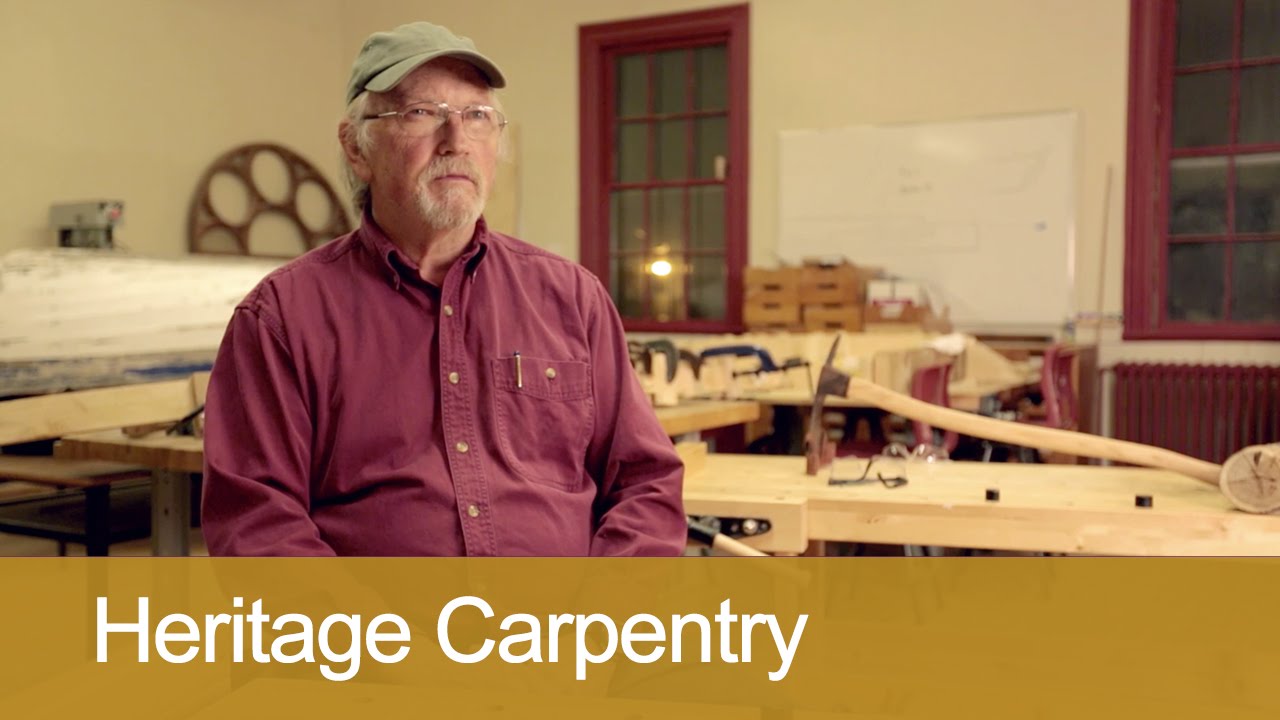Looking to learn about heritage carpentry? You’re in the right place! Heritage carpentry is all about preserving and restoring traditional woodworking techniques. It’s like taking a step back in time to create beautiful, timeless pieces.
In this article, we’ll dive into the world of heritage carpentry, exploring its history, techniques, and why it’s still relevant today. So, grab your tools and let’s embark on this woodworking adventure together!
Whether you’re a budding carpenter or just curious about the craft, heritage carpentry offers a fascinating glimpse into the traditions and craftsmanship of our ancestors. Let’s uncover the magic of working with wood and discover the artistry that goes into creating heirloom-quality pieces.

What is Heritage Carpentry?
Welcome to the world of heritage carpentry, a craft rooted in tradition and craftsmanship. Heritage carpentry refers to the practice of preserving and restoring historical buildings and structures using traditional woodworking techniques. It involves the meticulous repair, replication, and installation of architectural elements such as doors, windows, floors, and decorative moldings. Heritage carpenters work with precision and attention to detail to ensure that the original character and integrity of the structure are preserved.
Heritage carpentry is a specialized field that requires extensive knowledge of historical construction methods and materials. By combining traditional hand tools and techniques with modern innovations, heritage carpenters are able to recreate intricate details and bring historic structures back to life. Whether it’s a historic home, a heritage landmark, or a museum exhibit, these skilled craftsmen play a crucial role in preserving our architectural heritage for future generations.
The Importance of Heritage Carpentry
Preserving our architectural heritage is not just about maintaining old buildings; it’s about honoring our past and learning from it. Heritage carpentry plays a vital role in this process by allowing us to experience history firsthand and gain a deeper understanding of our cultural roots. By restoring historical structures to their former glory, heritage carpenters help to keep our heritage alive, ensuring that future generations can appreciate and learn from the craftsmanship of the past.
Without the knowledge and skills of heritage carpenters, many historical buildings would be lost forever. Their expertise in restoration and replication allows them to work seamlessly with existing structures, ensuring that any repairs or additions are indistinguishable from the original. This level of authenticity is crucial to preserving the integrity and value of historical properties, as well as maintaining the aesthetic charm that makes them unique.
The Skills of a Heritage Carpenter
Heritage carpenters are highly skilled craftsmen who possess a deep understanding of traditional woodworking techniques and materials. They have knowledge of historical architectural styles and are able to replicate them accurately. Here are some of the key skills required to excel in heritage carpentry:
- Woodworking: Heritage carpenters are experts in working with wood, both in its raw and finished forms. They have a mastery of hand tools, such as chisels, planes, and saws, and know how to shape, join, and finish wood to achieve the desired results.
- Knowledge of Historical Styles: To successfully restore or replicate historical architectural elements, heritage carpenters must be familiar with the various styles that were prevalent during different periods of history. This includes understanding the proportions, motifs, and ornamentation that define each style.
- Attention to Detail: Heritage carpenters understand that the devil is in the details. They meticulously recreate intricate moldings, carvings, and other decorative elements to ensure a seamless integration with the existing structure.
Preserving Heritage Through Carpentry
Preserving our architectural heritage is not just about technical knowledge and craftsmanship; it’s also about a commitment to sustainability. Heritage carpenters strive to use sustainable materials and techniques to ensure that their work has a minimal impact on the environment. They often source reclaimed or salvaged wood, which not only reduces waste but also ensures that the historical integrity of the structure is maintained. By choosing to restore rather than demolish, heritage carpentry promotes a more sustainable approach to construction and preserves valuable resources.
In addition to their craftsmanship, heritage carpenters also play a crucial role in research and documentation. They carefully study historical records, photographs, and other sources to ensure that their work accurately reflects the original design and construction of the building. This attention to detail helps to preserve the historical accuracy of the structure and contributes to its cultural significance.
The Future of Heritage Carpentry
As our cities evolve and modernize, the need to preserve our architectural heritage becomes even more critical. Heritage carpentry is not just a profession; it’s a passion for those who are dedicated to preserving our past. With advancements in technology and a growing appreciation for historic preservation, the future of heritage carpentry looks promising.
In conclusion, heritage carpentry is more than just a skill; it’s an art form that allows us to connect with our past and appreciate the craftsmanship of previous generations. By preserving historical buildings and structures, heritage carpenters ensure that our architectural heritage lives on, offering us a glimpse into history and a reminder of our cultural identity.
Key Takeaways: What is Heritage Carpentry?
- Heritage carpentry is a traditional woodworking craft that focuses on preserving and restoring historical buildings and structures.
- This specialized skill requires craftsmanship, attention to detail, and a deep understanding of historical construction techniques.
- Heritage carpenters work with materials like reclaimed wood and utilize traditional tools and joinery methods.
- They play a crucial role in maintaining the authenticity and structural integrity of heritage sites.
- Heritage carpentry combines artistry, history, and construction, creating unique pieces that showcase the rich cultural heritage of a place.
Frequently Asked Questions
Welcome to our frequently asked questions section on heritage carpentry! Here, we’ll answer some common queries about this fascinating craft that preserves and restores historical wooden structures and features. Read on to learn more!
1. What exactly is heritage carpentry?
Heritage carpentry refers to the specialized field of woodworking that focuses on preserving, restoring, and recreating traditional wooden structures and architectural features with historical significance. It involves working with traditional techniques, tools, and materials to ensure authenticity and accuracy in the restoration process.
Skilled craftsmen in heritage carpentry often work on historic homes, barns, churches, and other historical buildings, utilizing their knowledge of traditional joinery, timber framing, and woodworking methods. By combining craftsmanship and a deep understanding of historical styles, these artisans help to retain the cultural and historical value of our built heritage.
2. What types of projects does heritage carpentry encompass?
Heritage carpentry encompasses a wide range of projects that aim to preserve and restore architectural elements from different time periods. These projects can include restoring original wooden windows and doors, recreating intricate wooden moldings and panels, repairing traditional timber framing, and even constructing historically accurate replicas of historical structures.
Whether it’s repairing a centuries-old wooden staircase, reconstructing a heritage barn using traditional joinery techniques, or recreating ornate wooden elements for historical landmarks, heritage carpentry covers a diverse range of projects that require both skill and historical expertise.
3. What skills are required to become a heritage carpenter?
Becoming a heritage carpenter requires a combination of traditional woodworking skills, a deep understanding of historical architecture, and a passion for preserving cultural heritage. Proficiency in woodworking techniques such as joinery, carving, and timber framing is essential. Additionally, knowledge of historical architectural styles, materials, and construction methods is crucial for accurately restoring and recreating heritage structures.
Attention to detail, patience, and craftsmanship are also vital traits for heritage carpenters. Being able to meticulously replicate intricate wooden details while maintaining the integrity and authenticity of the original structure is a key aspect of this specialized craft.
4. How important is heritage carpentry in preserving our history?
Heritage carpentry plays a crucial role in preserving our history by ensuring that historical wooden structures and features are accurately restored and maintained. Historical buildings and structures are not only important from an architectural perspective but also serve as a tangible link to the past, reflecting the cultural, social, and economic history of a particular time period.
By employing traditional woodworking techniques and materials, heritage carpentry helps retain the authenticity of historical structures and prevents their deterioration. It allows future generations to appreciate and learn from our architectural heritage, fostering a sense of connection to the past and a deeper understanding of our collective history.
5. Can anyone hire a heritage carpenter for their restoration project?
Absolutely! While heritage carpentry may be a highly specialized field, anyone with a restoration project involving historical wooden structures or architectural features can hire a heritage carpenter. From homeowners wishing to restore their historic houses to organizations responsible for maintaining heritage sites, professional heritage carpenters can assist in preserving and reviving the historical value of wooden structures.
When looking to hire a heritage carpenter, it’s essential to choose someone with experience in the specific type of restoration work needed and a demonstrated appreciation for historical accuracy. Consulting with a professional in heritage carpentry will ensure that your restoration project is carried out with the highest level of craftsmanship, expertise, and respect for your building’s unique history.
Summary:
Heritage carpentry is a traditional craft that involves creating wooden structures using age-old techniques. It plays an important role in preserving historical buildings and maintaining cultural heritage. This type of carpentry requires skilled craftsmanship and attention to detail. By using hand tools and authentic materials, heritage carpenters ensure that the design and construction reflect the original style of the building. It is an essential skill that contributes to the restoration and conservation of our architectural history.
Heritage carpenters are responsible for repairing and maintaining historical structures, ensuring their longevity. They work closely with architects and conservationists to preserve the authenticity and integrity of these buildings. Through their dedication and knowledge, they help safeguard our cultural heritage for future generations to appreciate and enjoy. Heritage carpentry is not just a craft; it is a way of preserving our past and ensuring that it continues to be visible in the present.

